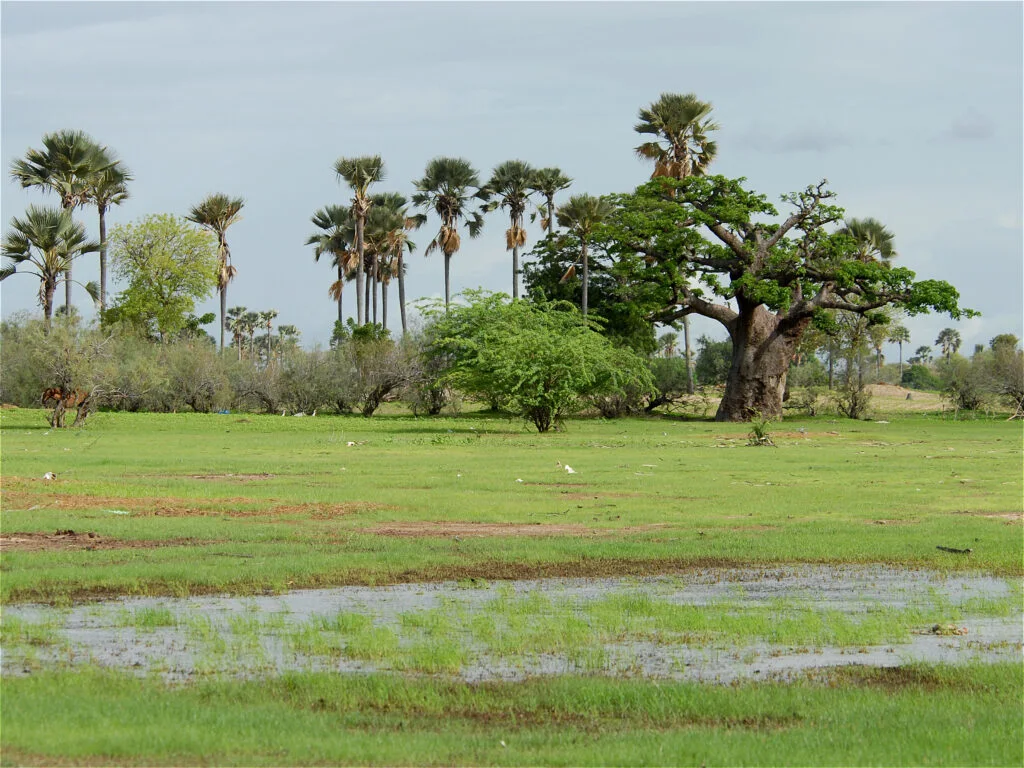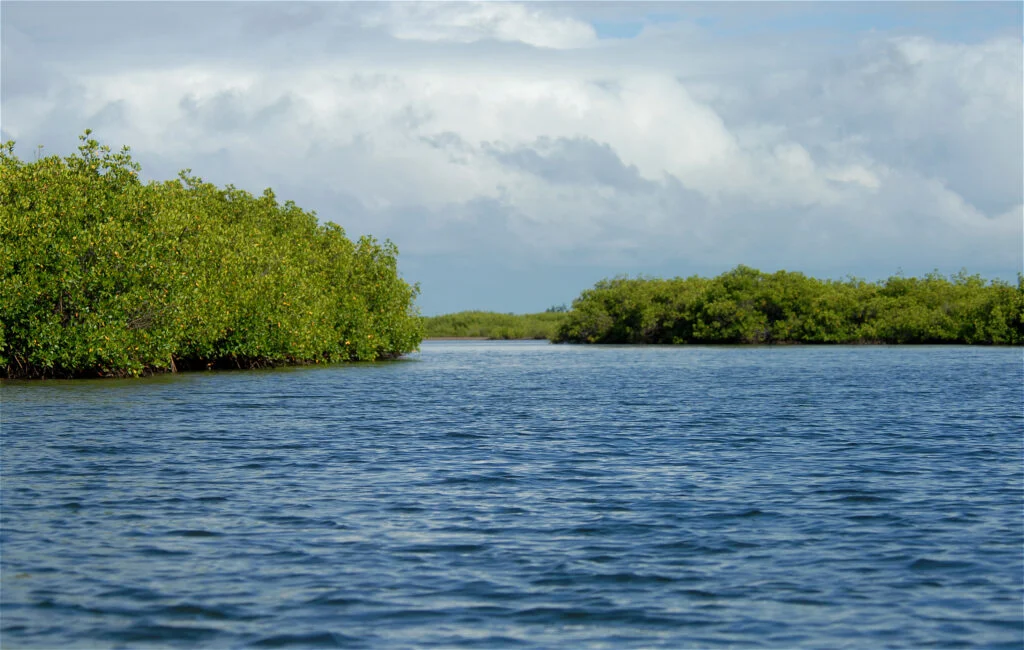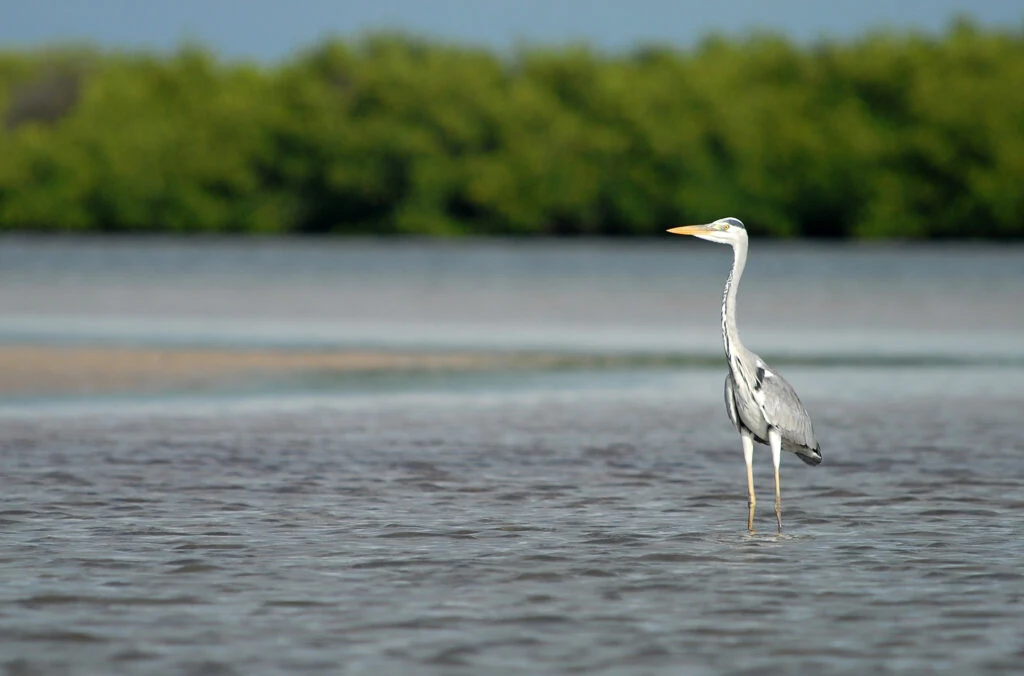The Saloum Delta National Park is a real labyrinth of brackish water channels. Made up of more than 200 islands, a few of them are inhabited by small communities of fishermen, ranchers and farmers. It houses a vast expanse of mangrove forest that serves as a refuge for fish, crustaceans and molluscs. An amphibious land at the mercy of the tides, a feeding ground for thousands of waterfowl and home to one of the most enigmatic animals in West Africa, the African manatee.
 |
| Saloum Delta National Park |
The Saloum Delta National Park is formed by a wide river delta between the mouths of the Saloum and Sine rivers. Located about 150 kilometers south of the noisy city of Dakar, a short distance from the Gambian border. It is one of the most unique spaces on the Senegalese coast.
In 1976, more than half of the Delta was declared a national park, being one of the six national parks in the country, the second in area. Its importance at the international level has led it to be recognized as a Biosphere Reserve by UNESCO in 1980, and more recently in 2011 as a World Heritage Site. In addition, in 1984 it was included as a Ramsar area, as it is considered one of the most important aquatic ecosystems in this region of the continent.
 |
| Saloum Delta National Park |
The delta has been populated for thousands of years, the result of this human colonization is the multitude of mounds of mollusk shells, some of them several tens of meters long. In some of these shell mounds there are funerary remains, in which important archaeological finds have been made that are vital to understanding the human colonization of West Africa.
Formed by a large area of mangrove forest, a type of amphibian forest found in the coastal strip of tropical areas, it is one of the most productive ecosystems on the planet. A forest made up of a wide variety of trees with long, thick roots that are semi-submerged in the sea water. Under this network of roots, the juveniles of more than 115 species of fish, and various molluscs and crustaceans of fishing interest, which in their adult phase live in the high seas, find refuge.
Although the area is dominated by mangroves, we also find sand dunes, large areas of marshes, semi-desert savannah areas and baobab forests, one of the sacred trees of the African continent.
 |
| Saloum Delta National Park |
The fauna of the Saloum Delta
Pelicans, spoonbills, herons, egrets, flamingos, terns, seagulls, cormorants and an infinity of aquatic birds roam every day among the mudflats left in the air at low tide. The importance for the birds is more than manifest. The delta is home to one of the largest populations of terns on the continent. More than 30,000 pairs of royal terns breed in the park, a frequent seabird in coastal environments of tropical Africa.
In addition, here the martial eagle can be observed with some ease, one of the three species of large eagles specialized in hunting medium-sized monkeys, which live in the tropical areas of the planet.
One of the best places for bird watching is the so-called Isla de Los Pajaros, a small sand island where numerous species of waterfowl breed.
Golden jackals, warthogs, red colobus, vervet monkeys, and mallards are some of the other animals you can see and photograph in the park.
The locals tell legends related to one of the most enigmatic animals in the region, the African manatee, a species of aquatic mammal belonging to the sirenidae family, which survives in the less traveled areas of the mangrove forest.
 |
| Saloum Delta National Park |
Visit the Saloum Delta
The best time to visit the park is after the rainy season, from October to January, when thousands of European migratory birds find their winter refuge here. The Delta is made up of more than 200 islands, 19 of them inhabited. One of the best known is Mar Lodj, an island of around 45 square kilometers populated by more than 4,000 Muslim, Christian and animist inhabitants, dedicated to fishing, livestock and agriculture. An example of coexistence.
The best place to enter the Delta is from Ndangane, a small fishing village a few kilometers from the tourist town of Joal Fadiouth. In this place you can hire canoe routes for one or several days to get to know the Delta and its people. You can also enter from Toubakouta, located in a wooded area to the south of the park, from here you can also hire local guides to make walking routes to observe fauna and flora, or simply discover other forms of life.
